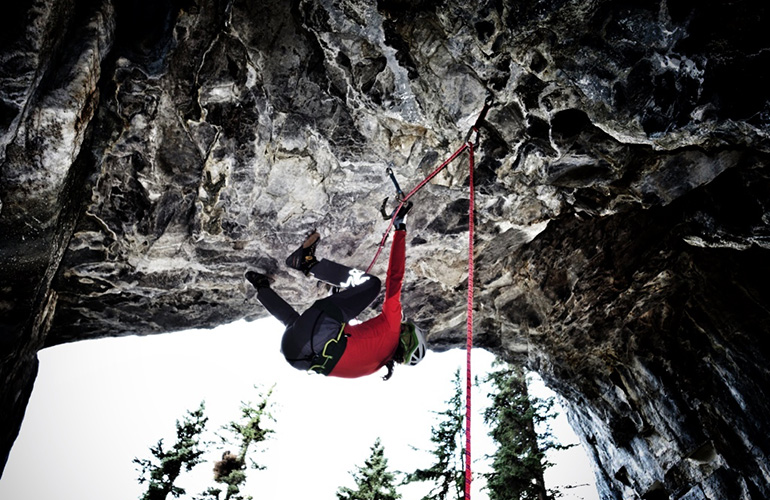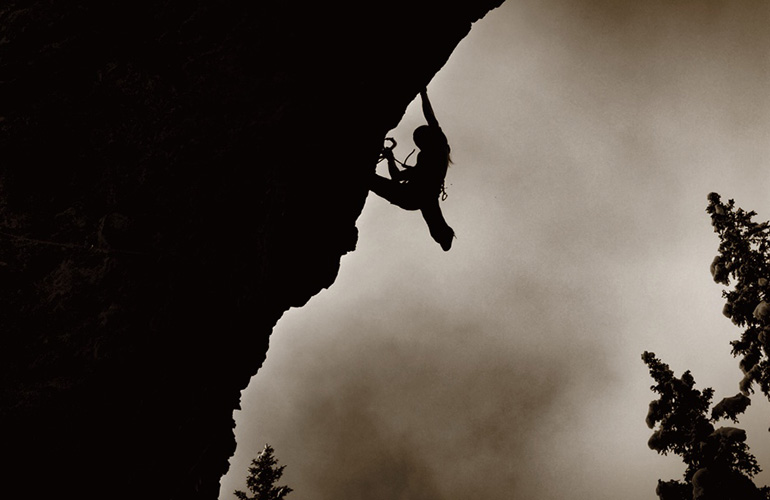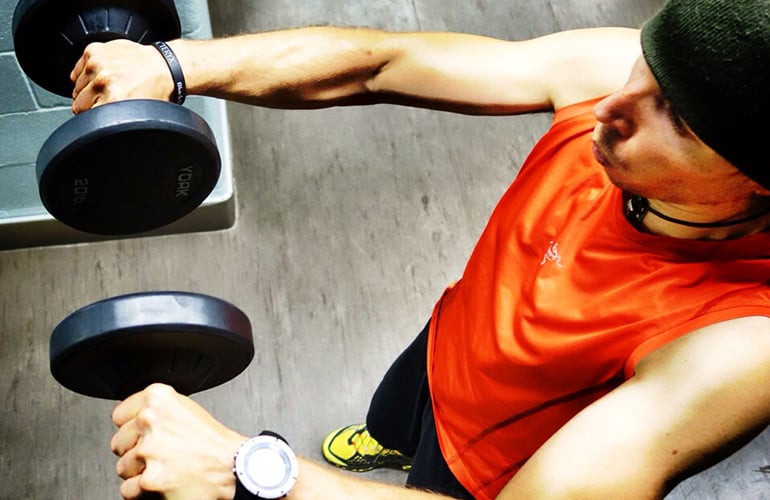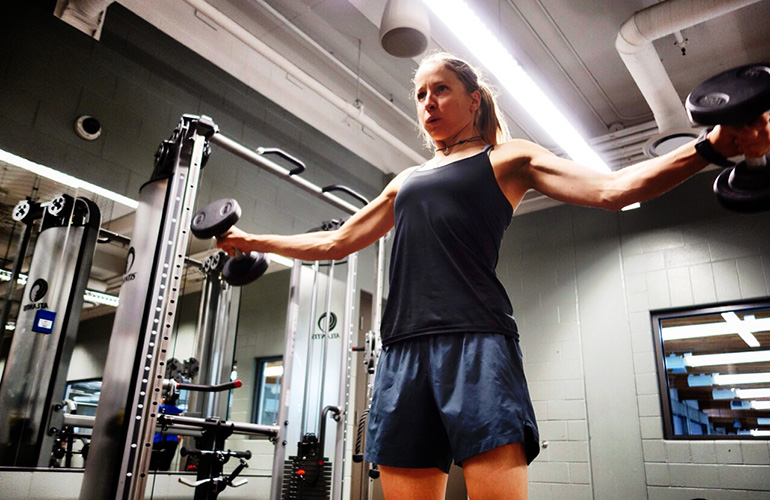Matthias Scherer and Tanja Schmitt are two of the most active ice climbers in the world. How are they preparing their bodies for the upcoming season? By dry-tooling and cranking out sets of pull-ups and other drills in the gym, that's how. Below, they share some of their training secrets.
Dry-tooling
“Drytooling means climbing with ice tools and crampons on rock,” says Matthias. “It's a very good physical preparation for ice climbing but should not be confused with ice climbing. Ice climbing is (like alpinism) all about the experience. You have to be willing to learn new things continuously and constantlyadapt to the challenge the ice or the mountain presents. 
Matthias Scherer drytooling in Canmore, Canada. ©Tanja Schmitt
Many of the drytooling crags feature drilled holds. Drilled holds gives you the advantage that your tools will "stick" safely in the rock, so you can do athletic moves without the chance of popping your tool off – but you will not learn the skills how to scratch and place tools precisely on natural features. Those skills are primal when it comes to real mixed climbing. So new school drytooling on drilled holds is a great way to get physically fit, but it will not replace, or give any experience for ice or mixed climbing.”

Tanja Schmitt drytooling in Canmore, Canada. ©Matthias Scherer
“Our goal was to build core and arm strength Since we were able to climb a very athletic M9 10 times in one hour means that we achieved our goal!
Indoors – at the gym
While the best form of training is the real thing, gym sessions are also important parts of any fitness regime. These are some of the drills that Matthias and Tanja perform. “Our training in the weight room has the unique goal to compensate the hard impact that drytoolinghas on the body. So we train the opposite muscles after each Drytool workout next day in the gym. The training does not take a long time, in fact it can be done in 40-60 minutes. 20 minutes of a warm-up is however essential! Basically we do three circuits consisting of 6 different exercises. Each exercise or “set” consists of 10-15 repetitions and two minutes rest beween exercises.”

Matthias front lifting weights. ©Tanja Schmitt
One circuit consists of:
- Lateral Raises with adjustable dumbbells
- Front lifting with adjustable dumbbells
- Reverse butterly
- Chin pulls with a barbell
- Push ups
- Hanging leg raise (straight and bent arm)

Tanja performing lateral raises. ©Matthias Scherer
A quick daily training routine during the whole year when the pair can not go climbing is:
3 x 30 pull ups - two sets on tools, one on hands
3 x 30 push ups
3 x 15 hanging leg raises
3-5min rests between exercises. “In fact, we go on the slackline in between the sets, it's less boring.”